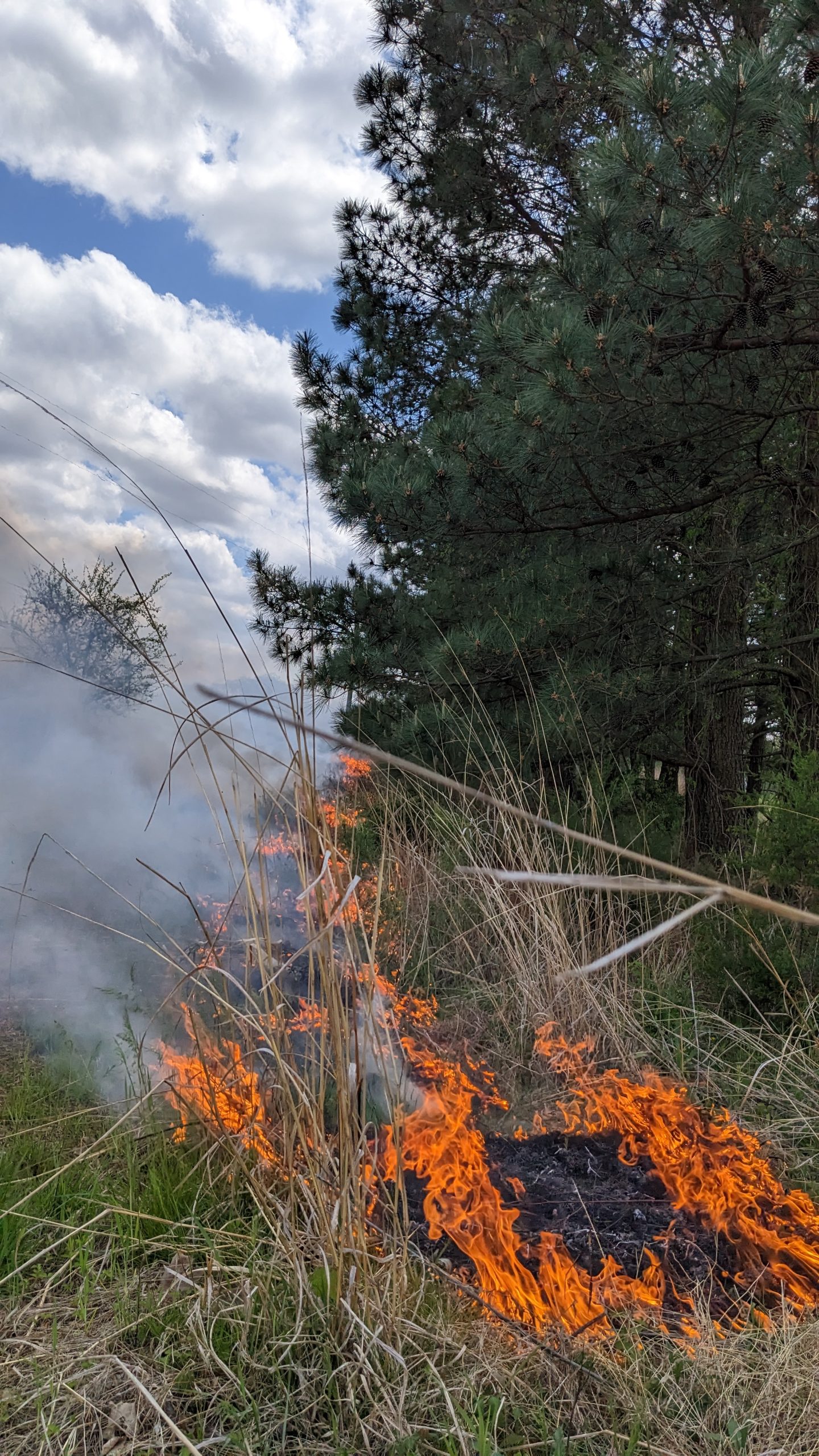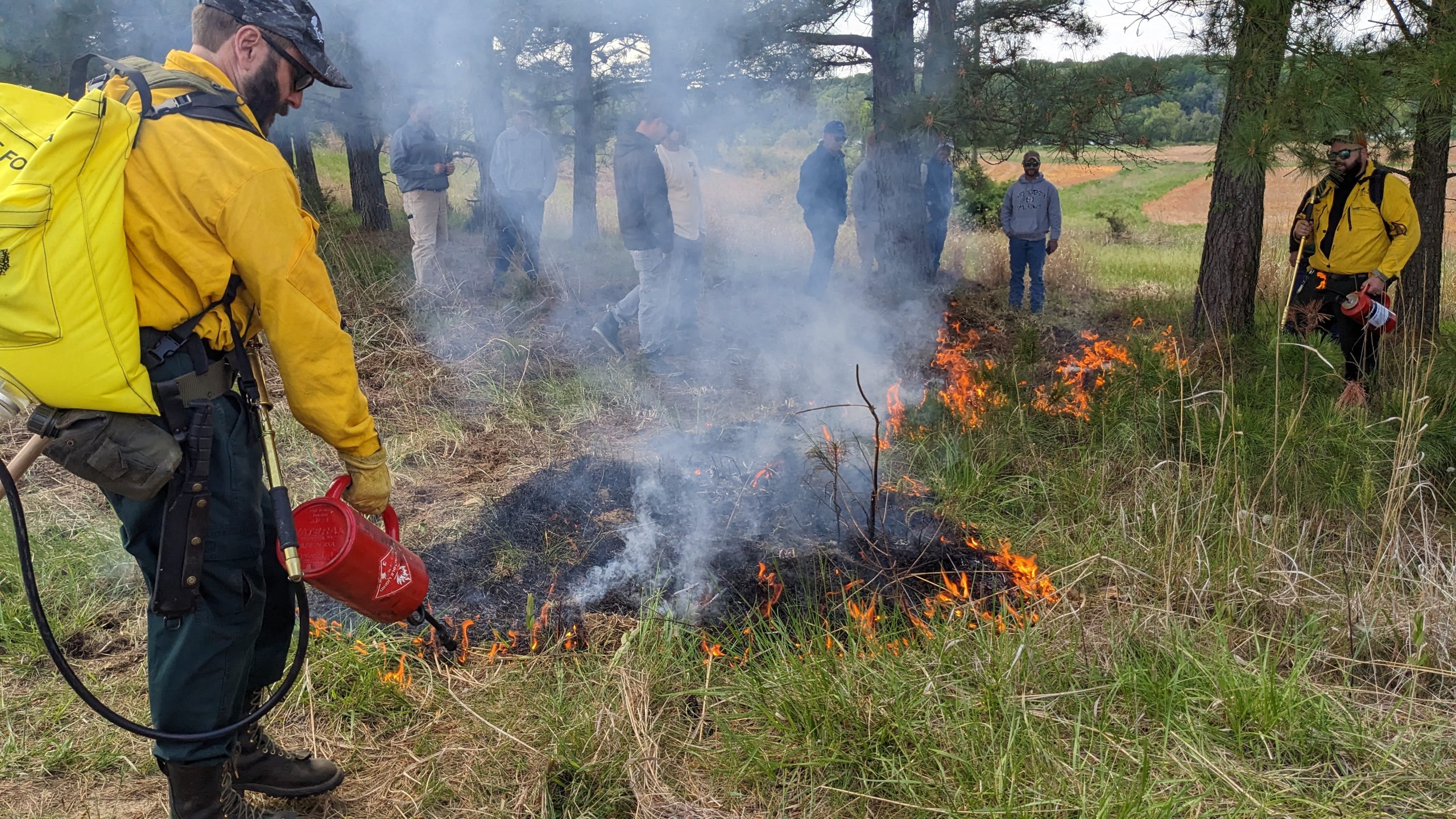Tall Timbers Learn and Burn at Turner’s Creek Farm

This week, conservation specialist Larisa Prezioso participated in a prescribed fire training course at Turner’s Creek Farm, a 479-acre farm protected by ESLC and owned by Bill D’Alonzo, the current chair of ESLC’s Board of Directors. Led by Tall Timbers, a Florida-based research center and land conservancy that specializes in fire ecology and bobwhite quail habitat, the comprehensive course covered everything from smoke mapping to history to tools. Participants learned the different uses of prescribed burns (including game-management and silviculture), reviewed the permitting process with Maryland DNR, observed a live “learn and burn,” and heard from the Nature Conservancy’s Director of Ecological Management, Dr. Deborah Landau on the fire ecology of our specific Delmarva area.
Controlled burns are often used to replicate the effects of natural wildfires, an ecosystem disturbance that prevents grasslands from becoming forests. Often overlooked, grasslands are an essential open space between the forests and wetlands of the Eastern Shore, providing a special habitat for hundreds of native plants and animals. Grasslands are also necessary for filtering water, protecting pollinators, and storing carbon.
In addition to maintaining this open space, burning can also increase biodiversity in grasslands by removing competing vegetation and making room for other new flora to emerge, including species like bluestem or black-eyed susans, whose seeds have been patiently waiting their turn beneath the surface of the soil.
The management of grasslands through burning is deeply rooted in the history of the Delmarva Peninsula and was utilized regularly by the Indigenous people of this landscape. Unfortunately, many pre-colonial successional grasslands on the Eastern Shore have been lost as farms and managed woodlands have grown and become more productive. This decrease in grasslands has in turn decreased our community’s need for (and familiarity with) any sort of fire management. Rather than being seen as a beneficial, natural process, fires are often seen today as a harmful disaster. Thankfully, with organizations such as Tall Timbers advocating for burn management, fire is once again being adopted as a management tool in our landscape.
On ESLC’s easements, fire management is sometimes used for Conservation Reserve Program (CRP) plantings in order to reset a grassland when trees and invasive species being to overwhelm native grasses and other desired, planted species. Fire management is also widely used by the Maryland Forest Service to control Phragmites australis, an invasive reed species present in wetlands and shorelines all across the Eastern Shore. We are excited to see how responsible prescribed fires can continue to promote biodiversity, increase habitat for our beloved bobwhites and pollinators, and improve stewardship of the Shore’s protected lands.







